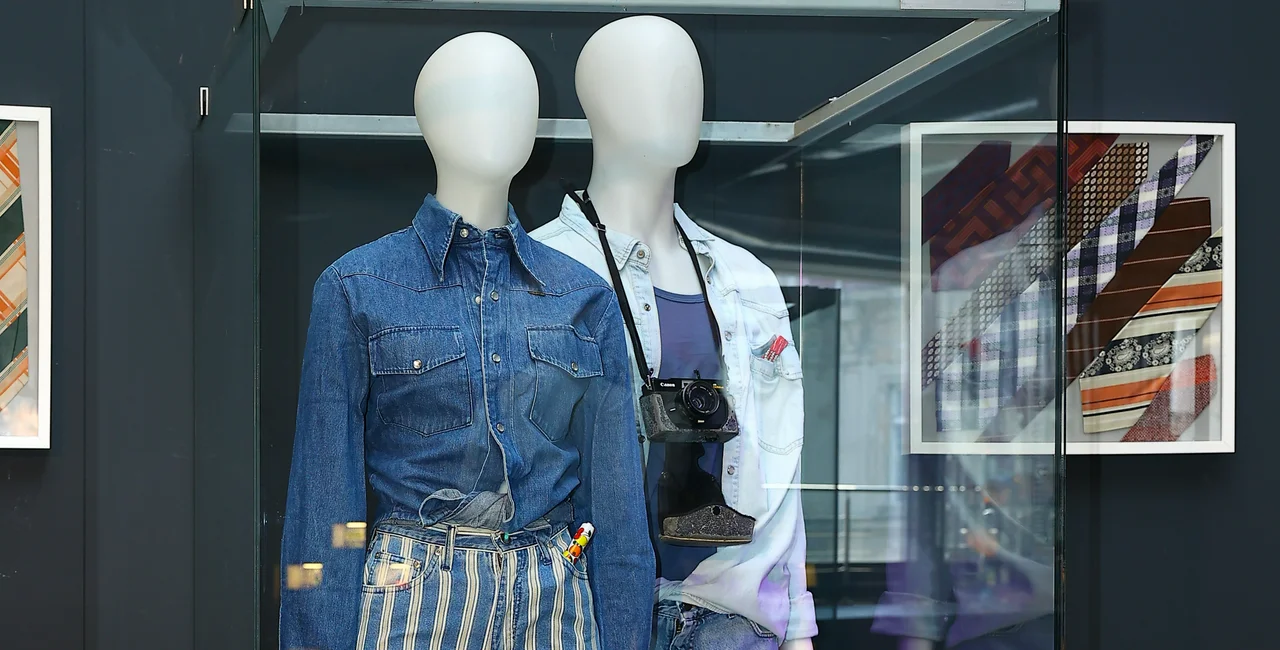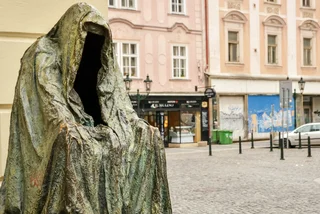For people in the U.S. or Western Europe, buying a pair of jeans in the 1980s was a pretty straightforward process. The biggest problem was choosing a brand. In Czechoslovakia, though, jeans were a highly sought-after item and when they were available, people would have to wait in lines to get them, just like bananas or other rare treats.
And at first, people couldn’t just get them in any store. Starting in the 1960s, they were only available from Tuzex, the state-run shops that required hard-to-get vouchers for purchases of foreign goods. Retro Muzeum Praha, located upstairs in the Kotva department store at náměstí Republiky, looks back at the fashion phenomenon with examples of vintage denim outfits and large-format advertisements.
The brand new section on jeans from Tuzex marks the museum's first anniversary. Since its opening, the museum has had 55,000 visitors. The exhibit also coincides with the 150th anniversary of San Francisco businessman Levi Strauss and Reno tailor Jacob Davis receiving a patent in the U.S. for work pants made with reinforcing rivets.
Most people who lived in Czechoslovakia in the previous era can recall when they got their first pair of jeans or denim jacket. Often, it was a special occasion like Christmas or even graduation.
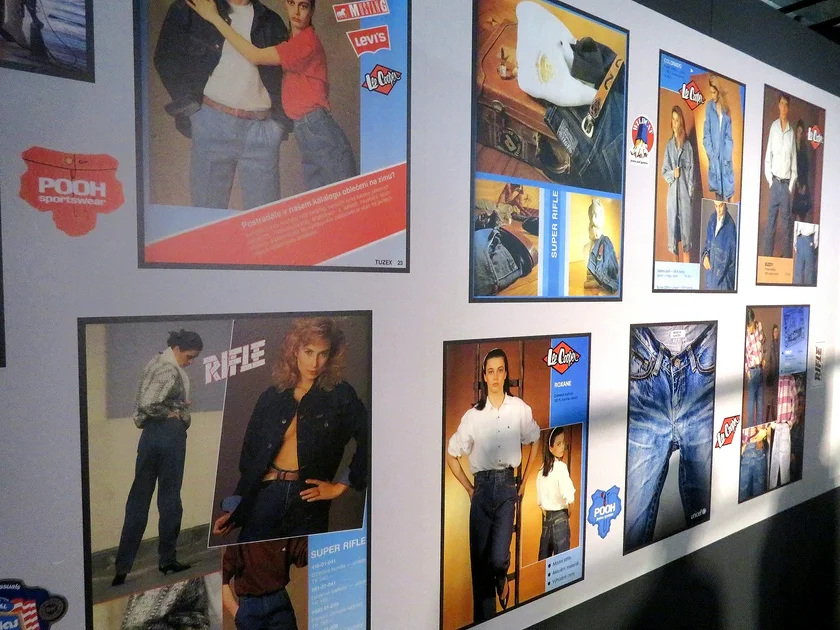
One Czech slang name for jeans is “rifle.” While American brands like Levi's were the most sought-after, they were also the hardest to find and most expensive. The most common brand was Rifle, which was made in Italy. They were also available first, since the 1960s. Another slang term for jeans is “texasky,” from the U.S. state of Texas. The official Czech word for jeans is “džíny,” which sounds the same except that Czech plurals end in “y” and not “s.”
A decadent symbol that could not be contained
Jeans first became available in Czechoslovakia in the 1960s but were initially seen as decadent or indecent for everyday wear and even a symbol of defiance against society. The first known public appearance of jeans in the communist era was in 1965 when Czech singer Václav Neckář wore them on Charles Bridge during the filming of a song for the television show. But that was before the crackdown on decadence in the 1970s.
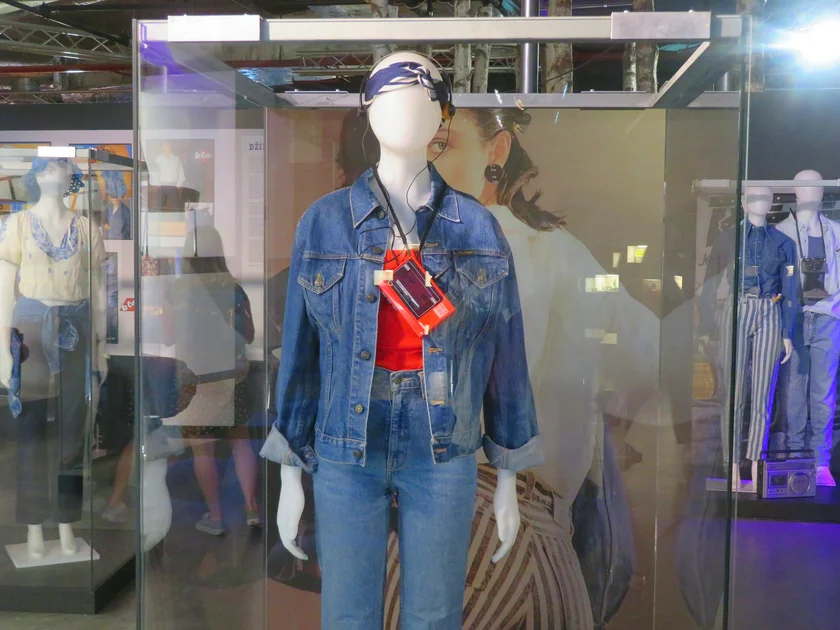
The global trend for jeans could not be held back forever. By the 1980s, the stigma had largely vanished, but not completely. There was a big black market in trading currency and Tuzex vouchers in the 1980s. Wearing imported jeans meant you likely shopped on the black market.
The popular 1987 film Bony a klid (Big Money) shows the life of Tuzex coupon black marketeers. Bony was the popular name for the vouchers needed at the stores.
In 1985, the average salary was Kčs 2,920. Tuzex vouchers had an exchange rate of five to one, and a pair of jeans cost about 130 “Tuzex crowns,” which would have worked out to Kčs 650. A month’s salary would buy about four and a half pairs of jeans.
Domestic jeans were never as popular as imports
If you can’t beat them join them has always been a popular philosophy. Czechoslovakia tried to make its own jeans but the domestic ones were never as popular as imports, according to Michal Petrov, the curator of the exhibit. He wrote an illustrated book about the fashion era called Jeans Story, available only in Czech.
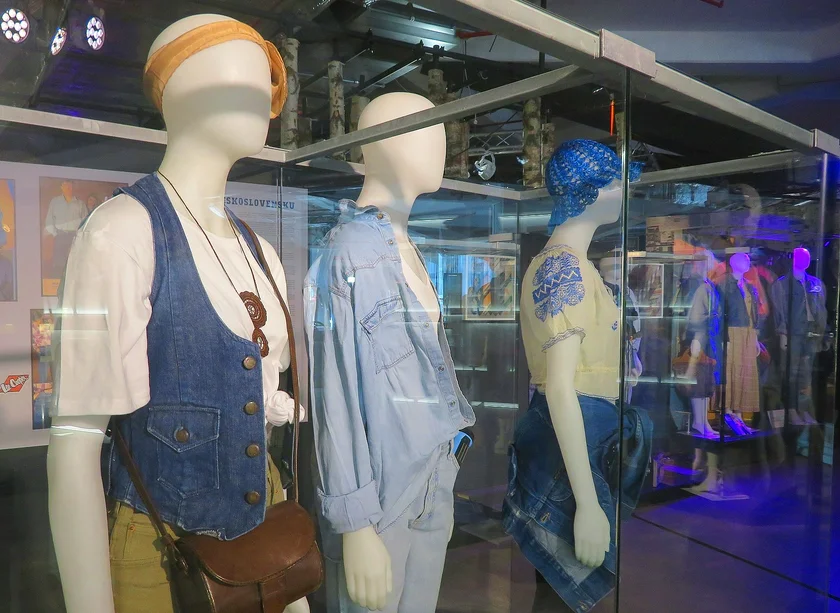
“In Czechoslovakia there was no technology for their production until the 1980s. Until the end of the regime, Tuzex goods were perceived as exclusive, and this also applied to jeans. Other attempts at denim clothing were perceived rather as a ridiculous substitute and the regime’s attempt to be modern,” Petrov said.
For many people, the high price put the imports out of reach. Young adults, who were most interested in jeans, typically had the least money. For those who wanted to go to discos and then-trendy places, a domestic denim outfit was better than no denim at all. But demand for imports remained high.












 Reading time: 3 minutes
Reading time: 3 minutes 